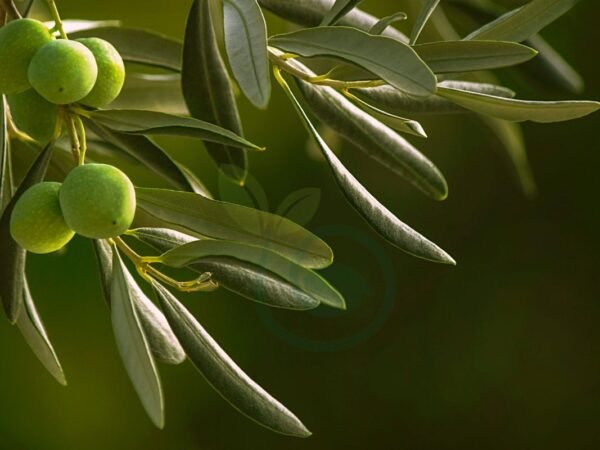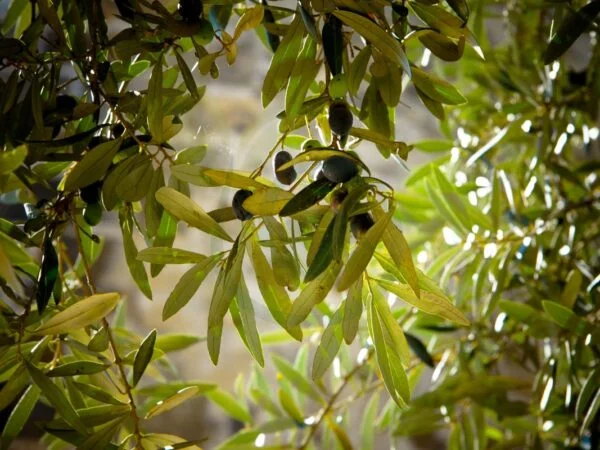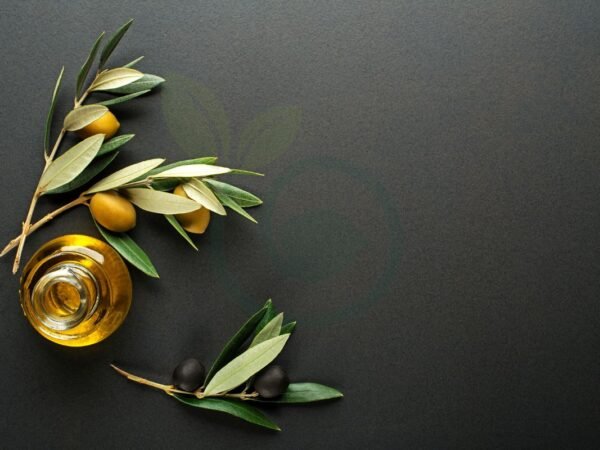Planting an olive tree in your garden can be both rewarding and challenging. While the process requires patience and attention to detail, the end result of enjoying homegrown olives makes it all worthwhile. From selecting the right location with ample sunlight to properly preparing the soil for optimal growth, each step plays a crucial role in nurturing a thriving olive tree. Understanding when and how to plant these trees is essential for their long-term health and productivity. In this guide, we will explore the steps involved in planting an olive tree in your garden, including digging a hole and spreading the roots to kickstart your gardening journey.
Key Takeaways
-
Choose a sunny and well-drained location with zones: Select a spot in your garden that receives ample sunlight and has good drainage to plant your olive tree successfully.
-
Pick the appropriate olive variety: Consider factors like climate, zones, and intended use (oil or table olives) when selecting the type of olive tree to plant in your garden.
-
Follow proper planting techniques: Ensure your olive tree is planted at the right depth, water it regularly during the first year, and provide adequate support if needed.
-
Maintain regular care routines: Prune your olive tree annually, fertilize it as needed, and monitor for signs of pests and diseases to keep it healthy and thriving.
-
Be vigilant against common pests and diseases: Look out for symptoms like leaf spots or scale infestations, and take prompt action using organic or chemical treatments as necessary.
-
Harvest olives at the optimal time: Monitor the color change of the olives to determine when they are ready for harvesting, then follow proper methods for picking and processing them.
Choosing the Right Location
Selecting the appropriate location is crucial for its growth and fruit production.
Climate Requirements
Olive trees are best suited for Mediterranean climates with mild winters and hot, dry summers. They can withstand temperatures as low as 15°F (-9°C), but they thrive when winter temperatures average above 20°F (-6°C). Areas with high humidity or excessive rainfall should be avoided when planting olive trees to prevent damage.
For optimal growth, ensure that the soil where you plant your olive tree is well-drained and has a pH level ranging from 6 to 8. Sandy or loamy soils are ideal for their root development, while heavy clay soils that retain water should be avoided to prevent root rot issues.
Soil Requirements
To provide your olive tree with ample sunlight exposure, choose a spot in your garden that receives full sun for at least six hours each day without any shade from buildings or other trees obstructing the light. This direct sunlight is essential for abundant fruit production.
Selecting Olive Varieties
Selecting the right variety is crucial. Two common varieties are Arbequina and Manzanillo. The Arbequina olive tree is ideal for smaller gardens due to its compact size, self-pollinating nature, high oil content, and flavorful small fruits. On the other hand, Manzanillo trees produce large olives used for table consumption but need cross-pollination with another variety to bear fruit.
Understanding the pollination needs of different olive tree varieties is essential. Some types are self-pollinating like Arbequina, allowing you to have a single tree that bears fruit. Conversely, others like Manzanillo require cross-pollination; thus, planting two compatible varieties nearby ensures successful fruit production through pollination.
Planting Olive Trees
Optimal Planting Time
When planting an olive tree in the garden, timing is crucial. The best time to plant these trees is in early spring, right after the last frost date. This timing allows the roots to establish themselves before the summer heat sets in. It's essential to avoid planting during periods of extreme cold or heat as this can stress the young tree.
Planting Steps:
- Dig a hole that is twice as wide and deep as the root ball of your olive tree.
- Ensure that when you place the tree in the hole, it sits at the same depth as it was in its container.
- Backfill the hole with soil, gently firming it around the roots to provide stability for your young tree.
Watering After Planting: After you've planted your olive tree, watering is critical for its survival and growth. Be sure to water thoroughly immediately after planting to help settle the soil around the roots. It's important to maintain consistent moisture levels by providing enough water without overwatering your newly planted olive tree. As your tree establishes itself, gradually decrease how often you water it while ensuring that the soil remains moist, not soggy.
Caring for Your Olive Tree
Watering Needs
Olive trees, once established, can withstand dry conditions but need regular watering in their initial year. To promote deep root growth, water your olive tree deeply and infrequently. Be cautious not to overwater the tree as it may cause root rot and other diseases. Adequate watering is crucial during the early stages of an olive tree's life.
To ensure your olive tree thrives, monitor its water needs closely throughout the first year. Deep watering sessions interspersed with dry periods encourage strong root development. Remember that overwatering can be detrimental to the health of your olive tree.
Fertilization Methods
Remember that these trees have modest nutrient requirements and might not need regular fertilization. Conduct a soil test to identify any deficiencies in specific nutrients that could affect your olive tree's growth. If necessary, apply a balanced fertilizer sparingly in early spring to support healthy growth. It is essential not to over-fertilize an olive tree as excessive nutrients can harm the plant instead of benefiting it.
Maintaining a watchful eye on your olive tree will help you determine if additional nutrients are required for optimal growth.
Pruning Techniques
Pruning plays a vital role in keeping your olive tree healthy and productive. Schedule pruning sessions for late winter or early spring before new growth emerges on the branches. During pruning, focus on removing dead or diseased branches along with any crossing or overcrowded ones that hinder proper air circulation within the canopy. By maintaining an open center shape through strategic pruning practices, you allow sunlight to penetrate deeper into the foliage while ensuring adequate airflow around all parts of the plant.
Regular pruning helps maintain the overall health and productivity of your beloved olive tree by promoting new growth while eliminating potential disease sources.
Common Pests and Diseases
Identifying Problems
Pests like olive fruit fly, scale insects, and aphids can wreak havoc on your olive tree. Watch out for signs such as holes in the fruit, sticky honeydew residue, or stunted growth. Keep an eye out for diseases including olive knot, verticillium wilt, and peacock spot. Symptoms may manifest as knotted growths on branches, yellowing leaves, or dark spots on the foliage.
To maintain a healthy olive tree, monitor it regularly for any issues. Check for leaf discoloration, wilting branches, or abnormal fruit development. Early detection of problems allows for prompt intervention to prevent further damage to your tree's health.
Preventative Measures
Combat pests organically by using methods like sticky traps or insecticidal soaps to manage infestations effectively without harmful chemicals. These environmentally friendly approaches help protect beneficial insects while targeting unwanted pests like aphids or scale insects. Moreover, practice good sanitation around your olive tree by promptly removing fallen leaves and fruits which can harbor pests and diseases.
Regularly inspecting your olive tree is crucial in preventing pest outbreaks and disease spread within your garden. By staying vigilant and addressing any signs of trouble promptly, you can ensure the long-term health of your beloved olive tree.
Olive Tree Growth and Development
Growth Rate
Olive trees grow slowly to moderately, especially during the initial years. Various factors like climate, soil quality, and pruning methods impact their growth rate. Once established, expect an average annual growth of 6 to 12 inches (15 to 30 cm). This slow but steady growth ensures a strong and healthy tree over time.
Flowering is a crucial stage that occurs in late spring or early summer. The flowers may be small and inconspicuous but play a vital role in fruit production. Following pollination, olives take several months to mature and ripen on the tree. Typically ready for harvest in late fall or winter, these fruits are essential for various culinary uses.
Flowering and Fruiting
As olive trees start flowering during specific seasons, they mark the beginning of the fruit-bearing process. The small flowers may not catch your eye at first glance but hold immense significance for future harvests. These delicate blooms pave the way for olive formation as pollination takes place naturally or with human intervention.
Harvesting Olives
Best Time to Harvest
To ensure the best results when harvesting olives, timing is crucial. For table olives, it's ideal to pick them when they are full-sized but still green. On the other hand, for those destined for olive oil production, waiting until they transition into a purple-black hue maximizes their oil content.
When aiming to harvest olives for consumption as table olives, you should look out for their size and color. Optimal time is when they have reached full growth but remain green in color. Conversely, if your goal is to extract olive oil from them, patience is key; wait until the fruits have turned dark purple or black before harvesting.
Harvesting Techniques
For small-scale gardeners looking to harvest their olive trees efficiently, handpicking remains the most common method. By gently twisting or using a small rake on the branches of the tree, you can effectively remove the ripe olives without causing damage. To prevent any fallen fruits from getting spoiled or damaged during harvesting, consider laying down a tarp or net underneath the tree as you work.
. Another effective technique involves using a gentle twisting motion or employing a small rake specifically designed for this task. Placing a protective layer like a tarp beneath your olive tree helps gather any fallen fruit safely while preventing bruising or spoilage.
Olive Tree Lifespan and Maintenance
Lifespan Expectancy
Olive trees are known for their remarkable longevity, with some living for several hundred years. With proper care, these trees can stay productive for 50 to even over 100 years. Regular maintenance practices such as pruning and disease prevention significantly contribute to extending their lifespan. By ensuring the tree's health is maintained, you can enjoy its beauty and benefits for decades.
One key factor in promoting an olive tree's long life is disease prevention through proper care routines. Pruning dead or diseased branches helps keep the tree healthy and productive. Monitoring the tree regularly for signs of pests or diseases allows early intervention, safeguarding its lifespan. Implementing a consistent watering schedule tailored to the tree's needs further supports its vitality.
Seasonal Care Tips
During winter months when temperatures drop, it is crucial to shield young olive trees from frost by covering them with blankets or burlap to prevent damage. In springtime, applying mulch around the base of the tree aids in retaining moisture levels and suppressing weed growth that could compete with the olive tree for nutrients. As summer brings hot weather conditions, providing extra water during extended dry spells ensures that your olive tree remains hydrated and healthy amidst high temperatures.
Consistent attention throughout each season plays a vital role in nurturing an olive tree towards a long and fruitful life span. Being attuned to seasonal changes enables you to anticipate your olive tree's needs at different times of the year effectively.
Troubleshooting Common Issues
If your olive tree is not thriving, there are some common problems you can troubleshoot. Waterlogged soil or poor drainage can stress the tree, so ensure proper water flow around the roots. Yellowing leaves might signal nutrient deficiencies; a soil test can pinpoint what's lacking in the soil.
Consulting with a local arborist or agricultural extension office is crucial for specific issues related to your region. They possess valuable knowledge about local conditions and can provide tailored advice to help your olive tree flourish. By seeking their expertise, you're more likely to address any unique challenges that may be hindering your tree's growth.
If your olive tree seems unwell, start by examining its surroundings. Make sure the soil isn't holding too much water as this could lead to root rot and other issues detrimental to the plant's health. If yellow leaves persist even after adjusting watering habits, it might be time for a professional opinion from an arborist or agricultural expert.
These professionals have insights into regional factors that could impact olive trees' well-being and growth patterns. By tapping into their experience and knowledge base, you'll gain customized solutions tailored specifically for your area's climate and soil conditions.
Congratulations on making it through the journey of planting and caring for your olive tree! You've learned about selecting the right location, choosing the best olive varieties, planting techniques, caring tips, dealing with pests and diseases, monitoring growth, harvesting practices, lifespan maintenance, and troubleshooting common issues. Your olive tree will thrive with the knowledge and care you've gained.
Now it's time to get your hands dirty and put all this valuable information into practice. Remember, like any relationship, nurturing your olive tree requires attention, patience, and a little bit of love. Keep tending to your tree, adapting to its needs as it grows. Soon enough, you'll be enjoying the fruits of your labor – literally! Happy gardening!
Frequently Asked Questions
How important is choosing the right location for planting an olive tree?
Selecting the right location is crucial for your olive tree's growth. It needs full sun and well-draining soil to thrive, mimicking its natural Mediterranean habitat.
What are some common pests and diseases that can affect olive trees?
Olive trees can be susceptible to pests like olive fruit fly and diseases such as peacock spot. Regular monitoring and proper care can help prevent infestations.
When is the best time to harvest olives from my tree?
The ideal time to harvest olives depends on the desired ripeness level. Generally, harvesting in late fall or early winter when they change color but are still firm is recommended.
How long do olive trees typically live, and what maintenance do they require?
Olive trees have a long lifespan of hundreds of years if cared for properly. Routine pruning, watering, fertilizing, and pest control are essential for maintaining their health and longevity.
What should I do if I encounter issues with my olive tree's growth or development?
If you notice any issues with your olive tree's growth or development, such as stunted growth or yellowing leaves, assess factors like sunlight exposure and soil moisture. Consulting a local expert can provide tailored solutions.
Image Source: Paid image from CANVA





